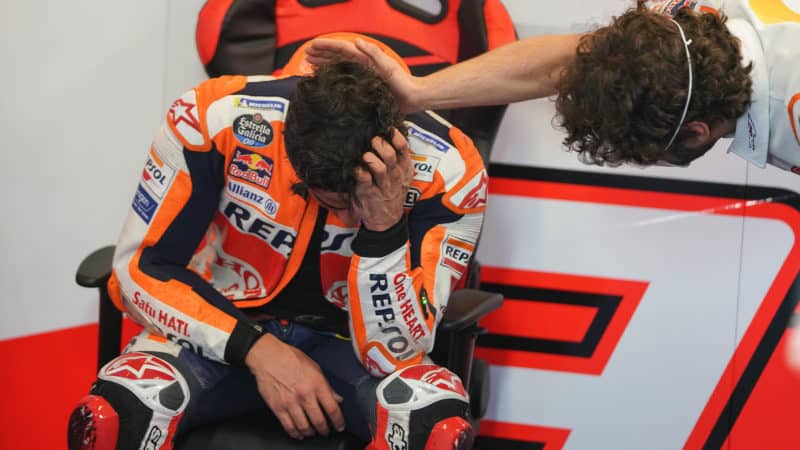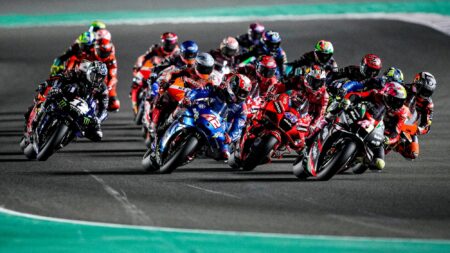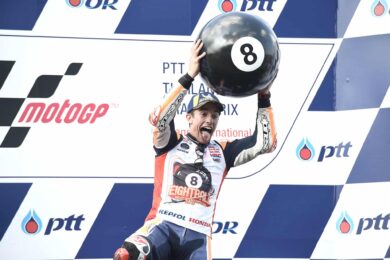Doohan’s story is infamous: a botched operation by local surgeons, kidnapped from hospital by race medic Dr Claudio Costa, who sewed the Aussie’s legs together to save the rotting right leg from amputation.
Just eight weeks later he was in Sao Paulo, Brazil, desperate to prevent title-rival Wayne Rainey from taking the points lead. Doohan was a mess: grey, withered, barely able to walk and unable to keep his right foot on the footpeg because the badly infected lower leg was so numb.
In the middle of the night before the race the infected leg exploded, leaking pus and fluid everywhere. Costa, sleeping in a nearby room, rushed to help. He flushed litres and litres of saline fluid through the gaping hole in the rotting flesh. Then Doohan tried to get back to sleep, without much success. He raced and finished just outside of the points. Two weeks later the title went to Rainey, who from the following year had his own horrors to face.
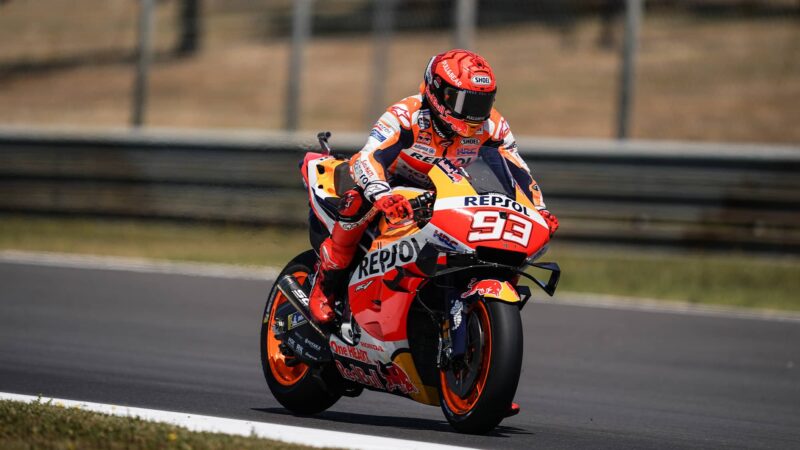
Almost like he’d never been away – Márquez hard on the brakes
Honda
Meanwhile Doohan went on to win five straight 500cc crowns – the greatest comeback ever.
Doohan underwent multiple surgeries on his mangled leg, including an operation to fix a mal-union. Márquez has so far undergone three surgeries on his right humerus, including a bone graft to fix a non-union. His time in and out of hospital may not have been as gruesome as Doohan’s, but like Doohan he knew it might be game over.
Márquez’s first exit from the pits on Friday morning was probably the most anticipated practice run in MotoGP history. All he wanted was a straightforward session on warm, dry asphalt, to ease himself back into the swing of things. What he got was a track drying after overnight rain.
To maintain that mental and muscle memory after so long is simply astonishing.
Márquez may be the master of treacherous mixed conditions – when he has the bravery and the talent to push harder than anyone to work heat into the front tyre. But after a nine-month break? He did it anyway, not quite like he’s done it at Sachsenring, Brno and elsewhere, but he rode harder than pretty much everyone else in the conditions to finish the session third fastest, two-tenths of a second behind Maverick Viñales.
The know-alls weren’t surprised. They knew he’d do it. He’s an alien, isn’t he?
But calling any rider an alien or a superhuman is a huge disservice. It suggests that they are imbued with special powers that make them superior to mere mortals. But of course they are mere mortals. They’re just braver, cleverer, more determined and, most of all, more prepared to sacrifice everything they have to achieve their goals. That’s what makes them special.
If FP1 was some kind of a fairytale, the rest of the weekend was anything but. MotoGP weekends get more and more and complicated with each session, even if you’re fully fit.
During the first two sessions Márquez was already making shapes – the front tucking, the rear kicking around – which boggled the mind. To maintain that mental and muscle memory after so long is simply astonishing.
Riding a motorcycle on the limit is a bit like speaking a foreign language. If you can speak the lingo you can have a conversation with someone. They say something, you understand what they’ve said and you reply in a way they understand.
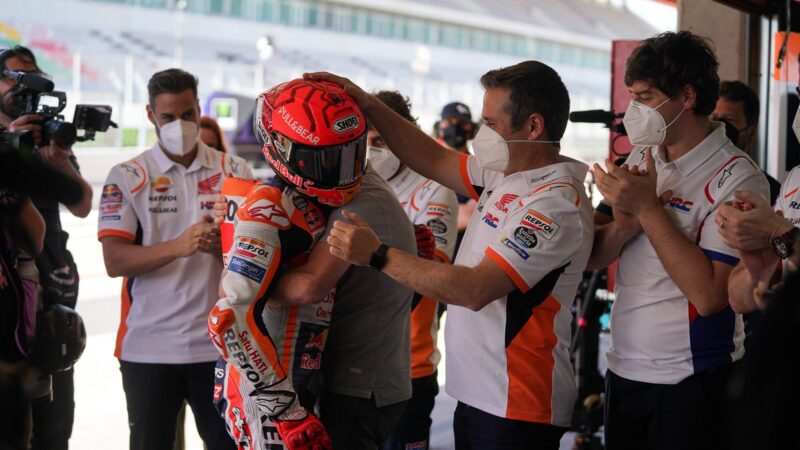
Márquez is congratulated by his father and his crew after Sunday’s race
Honda
When the motorcycle does something, like tuck the front, it speaks to you. It tells you many things, which you need to understand in a millisecond and then make your reply, in a way the motorcycle can understand and react to. If you misunderstood what the motorcycle told you or you replied incorrectly then you’ll probably crash. You had a misunderstanding.
It’s a wonderful feeling speaking a foreign language and it’s a wonderful feeling communicating with your motorcycle – that toing and froing, that call and response.
But if you go away and don’t speak that language for many months then you lose your fluency and when you next converse in that lingo you may struggle to make yourself understood.

